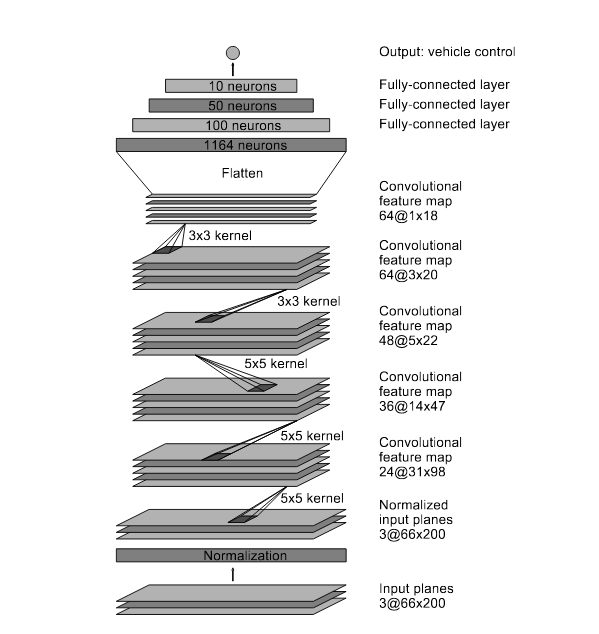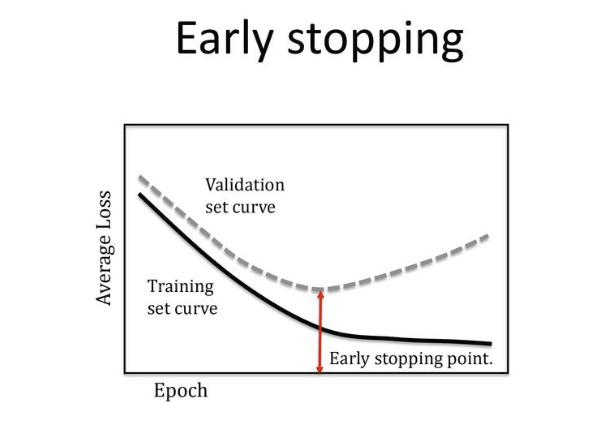The Behavioral Cloning project is a part of Self-Driving Car Nanodegree Program by Udacity. In this project, I applied deep learning technologies to train a convolutional neural network (CNN) to map raw pixels from a front-facing camera directly to steering commands. For the neural network architecture details, please refer to NVIDIA paper.
Behavioral Cloning Project
The goals / steps of this project are the following:
- Use the simulator to collect data of good driving behavior
- Build, a convolution neural network in Keras that predicts steering angles from images
- Train and validate the model with a training and validation set
- Test that the model successfully drives around track one without leaving the road
- Summarize the results with a writeup report
My project includes the following files:
- model.py containing the script to create and train the model
- drive.py for driving the car in autonomous mode
- model_10eps.h5 containing a trained convolution neural network
- writeup_report.md summarizing the results
- Video BehavioralCloning.mp4 /As this file is large, I could not update it into Github for now. Please see in the Youtube link as in the Results section/
Using the Udacity provided simulator and drive.py file, the car can be driven autonomously around the track by executing
python drive.py model.h5First, I played around with several models as suggestions from the course like model from comma.ai or NVIDIA. Finally, I chose model End-to-end Learning for Self-Driving Cars provided by NVIDIA because it achieved very good result in my experiments. The paper of NVIDIA for this architecture can be found here: https://arxiv.org/abs/1604.07316.
The neural network consists of five convolutional layers, followed by three fully connected layers. The network implemented in Keras as the following:
from keras.models import Sequential
from keras.layers import Flatten, Dense, Lambda
from keras.layers.convolutional import Convolution2D
from keras.layers.pooling import MaxPooling2D
model = Sequential()
model.add(Convolution2D(24,5,5, subsample=(2,2), activation='relu'))
model.add(Convolution2D(36,5,5, subsample=(2,2), activation='relu'))
model.add(Convolution2D(48,5,5, subsample=(2,2), activation='relu'))
model.add(Convolution2D(64,3,3, activation='relu'))
model.add(Convolution2D(64,3,3, activation='relu'))
model.add(Flatten())
model.add(Dense(100))
model.add(Dense(10))
model.add(Dense(1))
The model was trained by using Adam optimizer and mean square error as loss function.
model.compile(loss='mse', optimizer='adam')
For this project, I used the data samples provided by Udacity. I also recorded new data for two tracks for future verification and improvements. The data is splitted into two parts, 80% is used for training and 20% is used for validating.
For preprocessig data, the following steps have been used:
- Data augmentation: flipping the images and steering measurements
- Normalizing data and mean-centering data
- Cropping images in Keras
I trained several models with different numbers of epochs (5, 6 10, 15, 20) and observed the training loss and validation loss. In order to avoid overfitting, I used early stopping technique. I choosed the result where training loss is decreasing while validation loss started increasing.
The car drive itself in normal road. But it still struggles in some parts of the road or different roads. Please see my result in this video.
Although the trained model can be used to drive the car pretty good, there are still many things that I can improve this work and take it to higher levels. I consider the following things for my future works in this project:
- For the End-to-End Learning model, try with further feature engineering techniques and different data samples, applying more advanced techniques to improve the accuracy and reduce overfitting like dropout, L2-Regularization, etc...
- Trying with other neural networks like LeNet, VGG, Comma.ai, and other state-of-the-art models for Self-Driving Car the compare the performance.



